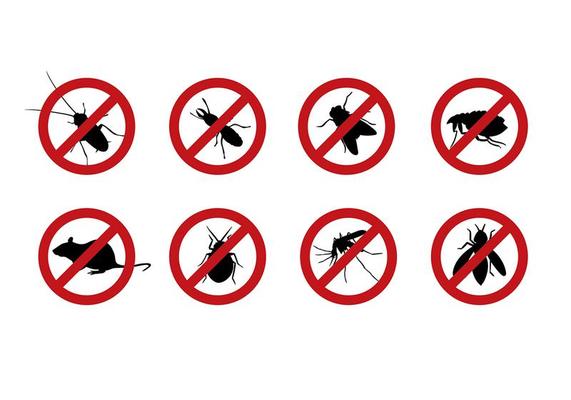A1 Pest Control Portland Bed Bugs - Professional Extermination Solutions
A1 Pest Control Portland Bed Bugs - Professional Extermination Solutions
Blog Article
Efficient Parasite Control Solutions: An Extensive Consider Extermination Techniques and Prevention Actions
In the world of pest control solutions, the effective monitoring of problems calls for a meticulous approach that integrates numerous methods and steps for both removal and avoidance. From Integrated Pest Monitoring (IPM) techniques that prioritize lasting services to chemical elimination strategies designed for targeted removal, the collection against parasites is huge and multifaceted.

Integrated Parasite Management (IPM) Strategies
Integrated Insect Management (IPM) Techniques include a thorough approach to pest control that concentrates on tracking, control, and avoidance approaches to successfully take care of bug populaces. By integrating different methods, IPM intends to decrease the effect of insects while also decreasing the reliance on chemical pesticides. Avoidance exists at the core of IPM, stressing practices like appropriate sanitation, maintenance of health, and sealing access indicate discourage parasites from infesting structures. Monitoring plays a critical function in IPM by on a regular basis recognizing and checking pest degrees to determine the proper treatment thresholds. Control approaches in IPM focus on the usage of physical, biological, and cultural approaches prior to transforming to chemical therapies as a last hope. These strategies include presenting all-natural killers, habitat modification, and utilizing capturing tools to keep insect populations in check. Overall, IPM fosters a ecologically aware and lasting method to pest monitoring, advertising lasting remedies that safeguard both human health and wellness and the community.
Chemical Extermination Strategies
Chemical elimination techniques are typically utilized in pest control solutions to properly remove insect populations that present a hazard to human wellness and home. These strategies involve making use of numerous chemical compounds particularly created to target and get rid of insects such as bugs, rodents, and other unwanted creatures. The application of chemicals, pesticides, rodenticides, and other chemical representatives is very carefully regulated to guarantee optimum effectiveness while minimizing threats to people, pets, and the environment.
Among the crucial advantages of chemical elimination techniques is their capacity to provide fast and targeted outcomes, making them particularly helpful in situations of severe infestations or urgent parasite control requirements - a1 residential pest control portland or bed bugs. Nevertheless, it is vital to highlight the value of appropriate handling, application, and disposal of these chemical items to stop unintentional harm
Furthermore, incorporated bug management (IPM) techniques frequently combine chemical elimination strategies with various other methods such as hygiene, habitat adjustment, and organic controls to produce a sustainable and thorough parasite control method. By including chemical elimination techniques carefully within an IPM structure, parasite control solutions can efficiently manage pest populations while decreasing prospective dangers to human wellness and the atmosphere.
Biological Bug Control Techniques
Utilizing all-natural killers and bloodsuckers to handle parasite populaces is a sustainable method referred to as biological parasite control. This method uses the all-natural systems of the environment to manage parasite populaces without depending on artificial chemicals. One usual organic control method includes presenting all-natural opponents of the target insect types, such as ladybugs for aphid control or look at here now nematodes for termite invasions. These all-natural killers eat the pests, helping to maintain their populaces in check.
One more effective biological control approach is using microbial insecticides. These are naturally taking place microbes, such as infections, microorganisms, and fungis, that especially target and contaminate certain parasite species. By making use of these microbial representatives, pest populations can be successfully decreased without causing or damaging valuable organisms harm to the setting.
Physical Parasite Avoidance Measures
Carrying out physical bug avoidance steps entails utilizing barriers and structural modifications to prevent pests from entering or infesting a home. Installing door moves, screens on windows, and securing cracks in the structure can assist prevent pests like pests and rodents from gaining accessibility indoors.
Another physical avoidance procedure is using obstacles like fence to keep larger parasites such as deer or raccoons away from the home. Mounting mesh or wire screens around gardens can safeguard visit here plants from being damaged by pests. Proper waste monitoring, consisting of safeguarding garbage cans with tight-fitting lids, is essential in preventing bugs like raccoons, rodents, and pests. By executing these physical parasite avoidance actions, homeowner can substantially reduce the risk of insect problems and the damages they can cause.
Professional Bug Assessment Procedures
Conducting systematic and comprehensive bug evaluations is a fundamental aspect of professional insect monitoring procedures. Specialist bug examiners are educated to diligently analyze residential properties for signs of infestations, determining pest types, entry points, and helpful conditions.

Final Thought
To conclude, efficient bug control services employ a range of techniques, consisting of Integrated Pest Monitoring techniques, chemical extermination techniques, organic controls, and pest inspection cost physical prevention steps. Professional insect inspection treatments play a crucial role in determining and addressing pest problems in a timely way. By carrying out a combination of these methods, residential or commercial property owners can efficiently stop and handle pest infestations.
From Integrated Insect Management (IPM) techniques that focus on sustainable options to chemical elimination strategies developed for targeted elimination, the arsenal against bugs is huge and complex.Integrated Bug Monitoring (IPM) Techniques encompass an extensive technique to pest control that focuses on prevention, control, and monitoring methods to effectively handle parasite populations.Chemical extermination methods are generally employed in bug control services to efficiently eliminate insect populations that posture a risk to human wellness and property.Utilizing natural killers and parasites to handle bug populaces is a lasting method understood as biological bug control.In verdict, effective bug control services use a range of techniques, including Integrated Pest Management techniques, chemical elimination methods, organic controls, and physical avoidance actions.
Report this page